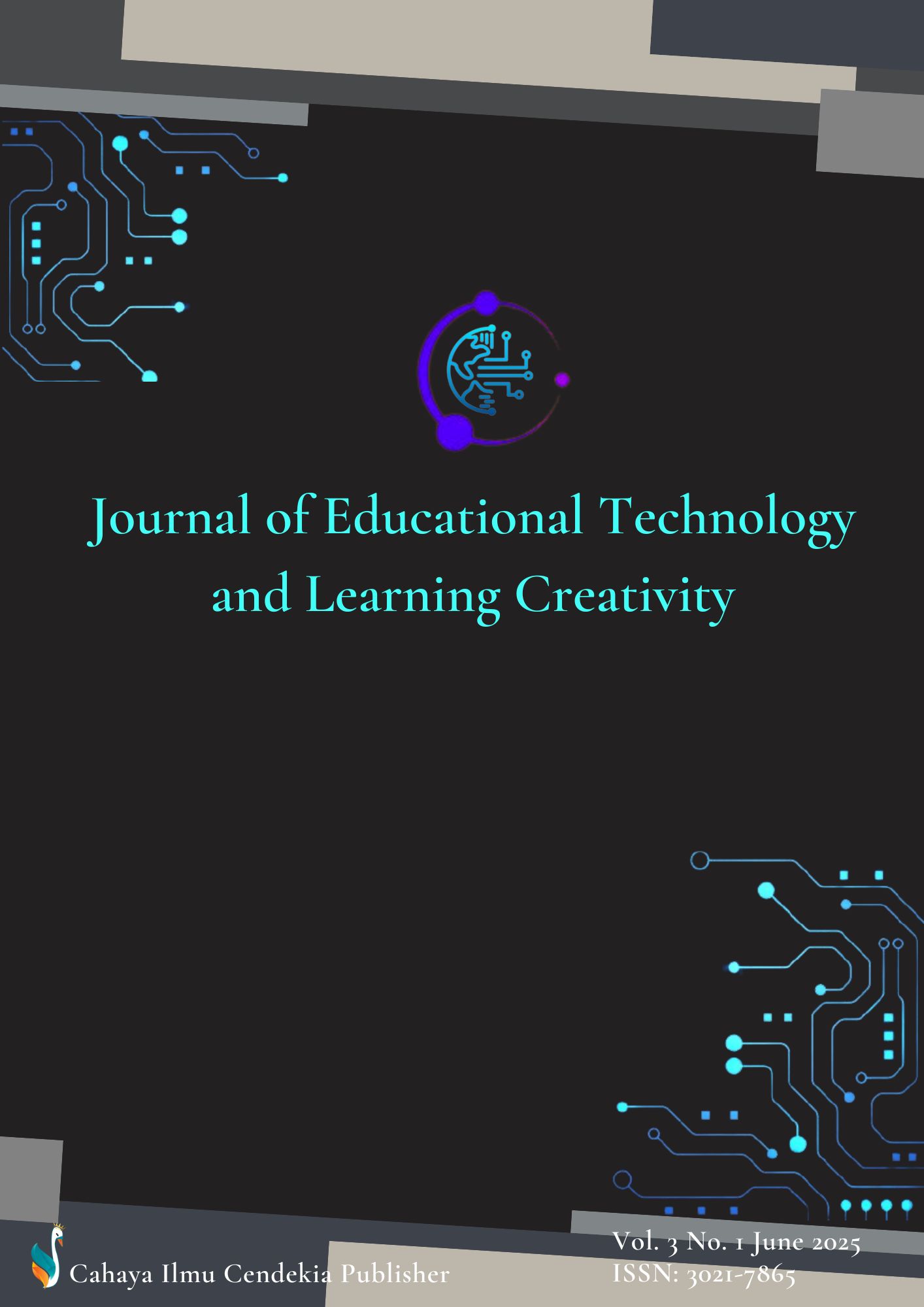From Virtual Carts to Real-Life Purchases: The Role of Digital Technology in Gen Z's Buying Decisions
Abstract
Purpose of the study: The main objective of this study is to conduct a confirmatory factor analysis on the determinants of shopping behavior, as well as to conduct a difference test analysis to see the differences in shopping behavior between Gen Z and Gen Y.
Methodology: The type of data used in this study is primary data, obtained through a questionnaire. The selected samples are Gen Z (aged 10-19 years) and Gen Y (aged 20-35 years) who shop online with e-commerce. The estimation method uses confirmatory factor analysis and independent t-test.
Main Findings: The results of the confirmatory factor analysis show that cultural, social, personal, and psychological variables are confirmed as variables that shape shopping behavior. Then the results of the difference test show that Gen Z's shopping behavior is different from Gen Y's shopping behavior.
Novelty/Originality of this study: This study offers new insights into how digital technology is bridging the gap between virtual shopping experiences and real-world purchasing decisions among Gen Z consumers. By examining the evolving influence of digital platforms, the study highlights new patterns in Gen Z consumer behavior, providing valuable perspectives for businesses adapting to the digital marketplace.
References
J. Wolff, “How is technology changing the world, and how should the world change technology,” Glob. Perspect., vol. 2, no. 1, pp. 1–5, 2021, doi: 10.1525/gp.2021.27353.
A. Szymkowiak, B. Melović, M. Dabić, K. Jeganathan, and G. S. Kundi, “Information technology and Gen Z: the role of teachers, the internet, and technology in the education of young people,” Technol. Soc., vol. 65, no. December 2020, 2021, doi: 10.1016/j.techsoc.2021.101565.
M. W. Jones et al., “Global and regional trends and drivers of fire under climate change,” 2022. doi: 10.1029/2020RG000726.
J. R. L. Soler, P. Christidis, and J. M. Vassallo, “Teleworking and online shopping: socio-economic factors affecting their impact on transport demand,” Sustain., vol. 13, no. 13, pp. 1–24, 2021, doi: 10.3390/su13137211.
L. L. Dragolea et al., “Determining factors in shaping the sustainable behavior of the generation Z consumer,” Front. Environ. Sci., vol. 11, no. 1, pp. 73–97, 2023, doi: 10.3389/fenvs.2023.1096183.
A. A. G. B. Udayana et al., “Investigating the role of e-commerce application and digital marketing implementation on the financial and sustainability performance: an empirical study on Indonesian SMEs,” Int. J. Data Netw. Sci., vol. 8, no. 1, pp. 167–178, 2024, doi: 10.5267/j.ijdns.2023.10.007.
Y. Ruzimatjon, “Digital technologies: how they are transforming our lives,” Web Sci. Sch. J. Multidiscip. Res., vol. 2, no. 6, pp. 73–79, 2024, [Online]. Available: http://webofjournals.com/index.php/12/article/view/1592
F. Yeasmin, “The impact of digital transformation on society: unraveling trends, challenges, and opportunities,” Eunomia–Rozwój Zrównoważony–Sustainable Dev., vol. 2, no. 108, pp. 53–67, 2024, doi: 10.5430/jbar.v8n2p20.
S. M. H. S. Khairudin and M. A. Mohammad, “The role of information technology on the muslim community in the era of globalization and digitalization,” J. Inf. Technol. Manag., vol. 13, no. 3, pp. 178–186, 2021, doi: 10.22059/JITM.2021.83236.
S. Waoma, Rahmat, Al-Amin, Zuwardi, I. Izmuddin, and L. Judijanto, “Perceptual mapping marketplace Tiktok Shop, Tokopedia, Shopee, Lazada, Blibli: positioning marketplace based on Indonesia online shopper preferences,” J. Ecohumanism, vol. 3, no. 4, pp. 2726–2737, 2024, doi: 10.62754/joe.v3i4.3786.
M. Anggraini, M. Reski, L. Yunara, and H. Hulwati, “Digitalization of the market place: a perspective on interaction theory and social change,” Innov. J. Soc. Sci. Res., vol. 4, no. 1, pp. 3253–3266, 2024, [Online]. Available: https://j-innovative.org/index.php/Innovative
A. Samudra and O. Usman, “The Influence of Lifestyle, Price and Convenience on Purchasing Decisions at the Lazada E-Commerce Site,” SSRN Electron. J., 2021, doi: 10.2139/ssrn.3768782.
P. E. Santo and A. M. A. Marques, “Determinants of the online purchase intention: hedonic motivations, prices, information and trust,” Balt. J. Manag., vol. 17, no. 1, pp. 56–71, 2022, doi: 10.1108/BJM-04-2021-0140.
D. N. Aryani et al., “A study on consumer behaviour: transition from traditional shopping to online shopping during the covid-19 pandemic,” Int. J. Appl. Bus. Int. Manag., vol. 6, no. 2, pp. 81–95, 2021, doi: 10.32535/ijabim.v6i2.1170.
A. Rosário and R. Raimundo, “Consumer marketing strategy and e-commerce in the last decade: a literature review,” J. Theor. Appl. Electron. Commer. Res., vol. 16, no. 7, pp. 3003–3024, 2021, doi: 10.3390/jtaer16070164.
N. A. N. Ibrahim et al., “Online shopping behaviour in youth: a systematic review of the factors influencing online shopping in young adults,” Int. J. Acad. Res. Bus. Soc. Sci., vol. 13, no. 2, pp. 168–178, 2023, doi: 10.6007/ijarbss/v13-i2/16257.
U. Akram, M. T. Fülöp, A. Tiron-Tudor, D. I. Topor, and S. Căpușneanu, “Impacto de la digitalización en el bienestar de los clientes en el período de pandemia: desafíos y oportunidades para la industria minorista,” Rev. Int. Investig. Ambient. y Salud Pública, vol. 18, no. 14, 2021, doi: 10.33412/pri.v15.1.3878.
A. Adibfar, S. Gulhare, S. Srinivasan, and A. Costin, “Analysis and modeling of changes in online shopping behavior due to Covid-19 pandemic: a Florida case study,” Transp. Policy, vol. 126, no. July, pp. 162–176, 2022, doi: 10.1016/j.tranpol.2022.07.003.
L. Reid, D. Button, and M. Brommeyer, “Challenging the myth of the digital native: a narrative review,” Nurs. Reports, vol. 13, no. 2, pp. 573–600, 2023, doi: 10.3390/nursrep13020052.
I. Agárdi and M. A. Alt, “Do digital natives use mobile payment differently than digital immigrants? A comparative study between generation X and Z,” Electron. Commer. Res., vol. 24, pp. 1463–1490, 2024, doi: 10.1007/s10660-022-09537-9.
A. Khurana and N. Girdhar, “Digital technologies and generation Z: shaping future education,” Int. J. Technol. Innov. Educ., vol. 2, no. 2, pp. 85–101, 2024, doi: 10.5281/zenodo.14789460.
V. Kulkarni and N. Rai, “Generation Z talent management in organisations: an HR perspective,” J. Surv. Fish. Sci., vol. 10, no. 1, pp. 1389–1396, 2023, doi: 10.53555/sfs.v10i1.2275.
L. Vávrová, E. Nacházelová, H. B. Foltýnová, E. Nacházelová, and H. B. Foltýnová, “Shaping mobility futures : understanding Millennials and Gen Z transport choices for sustainable policy design transport choices for sustainable policy design,” Sustain. Communities, vol. 2, no. 1, pp. 1–14, 2025, doi: 10.1080/29931282.2025.2483250.
C. Weaver, “Understanding generation Z : instructional strategies for engaging generation Z in the classroom and preparing them for the workplace,” Technoarete Trans. Appl. Inf. Commun. Technol. Educ., vol. 3, no. 3, pp. 1–19, 2024, [Online]. Available: https://technoaretepublication.org/information-communication-technology/article/generation-Z.pdf#:~:text=The study describes how Generation Z students learn,in the classroom, or in hybrid learning modes.
Ștefan-I. Anghel and F. A. Stan, “Social media and online shopping: exploring interactions and implications in the digital environment,” in Proceedings of the 7th International Conference on Economics and Social Sciences, 2024, pp. 985–993. doi: 10.24818/icess/2024/085.
S. B. Utomo, H. Jamali, I. Arief, M. N. Saputra, and C. G. Priambodo, “Analysis of the influence of hedonic digital lifestyle on consumptive e-shopping behavior of generation z through e-commerce applications,” J. Sistim Inf. dan Teknol., vol. 5, no. 3, pp. 85–91, 2023, doi: 10.60083/jsisfotek.v5i3.309.
M. Y. Mustafa, D. I. Rauf, and B. A. Killa, “Consumer behavior: lifestyle, social media and peer friends on consumptive behavior online shopping for fashion products on the tiktok platform (Study on Management Students of Makassar State University),” Ijhabs J. | Vol., vol. 1, no. 1, pp. 33–42, 2023, doi: 10.59971/ijhabs.v1i1.19.
K. A. D. U. Jayatissa, “Generation Z – A New Lifeline: A Systematic Literature Review,” Sri Lanka J. Soc. Sci. Humanit., vol. 3, no. 2, pp. 179–186, 2023, doi: 10.4038/sljssh.v3i2.110.
T. T. Harari, Y. Sela, and L. Bareket-Bojmel, “Gen Z during the COVID-19 crisis: a comparative analysis of the differences between Gen Z and Gen X in resilience, values and attitudes,” Curr. Psychol., vol. 42, no. 28, pp. 24223–24232, 2023, doi: 10.1007/s12144-022-03501-4.
S. Bulut and D. Maraba, “Generation Z and its perception of work through habits, motivations, expectations preferences, and work ethics,” Psychol. Psychother. Res. Study, vol. 4, no. 4, pp. 1–5, 2021, doi: 10.31031/pprs.2020.04.000593.
D. I. Jusuf, “Digital technology and changes in consumer behavior: case study of the millennial generation,” J. Ekon., vol. 12, no. 04, pp. 1338–1343, 2023, doi: 10.15722/jds.17.8.201908.25.
M. R. Miah, A. Hossain, R. Shikder, T. Saha, and M. Neger, “Evaluating the impact of social media on online shopping behavior during COVID-19 pandemic: a Bangladeshi consumers’ perspectives,” Heliyon, vol. 8, no. 9, p. e10600, 2022, doi: 10.1016/j.heliyon.2022.e10600.
B. Gajdzik, M. Jaciow, and R. Wolny, “Types of e-consumers and their implications for sustainable consumption—a study of the behavior of polish e-consumers in the second decade of the 21st century,” Sustain., vol. 15, no. 16, 2023, doi: 10.3390/su151612647.
F. C. Rozikin and M. G. R. Pandin, “Historical meme as a solution to improve generation Z nationalism in Indonesia,” Hist. J. Progr. Stud. Pendidik. Sej., vol. 9, no. 2, p. 151, 2021, doi: 10.24127/hj.v9i2.3823.
L. C. Wickord and C. Quaiser-Pohl, “Psychopathological symptoms and personality traits as predictors of problematic smartphone use in different age groups,” Behav. Sci. (Basel)., vol. 12, no. 2, 2022, doi: 10.3390/bs12020020.
A. Munsch, “Millennial and generation Z digital marketing communication and advertising effectiveness: A qualitative exploration,” J. Glob. Sch. Mark. Sci. Bridg. Asia World, vol. 31, no. 1, pp. 10–29, 2021, doi: 10.1080/21639159.2020.1808812.
M. Garai-Fodor, “Food consumption patterns, in a values-based approach, for generation Z,” Acta Polytech. Hungarica, vol. 18, no. 11, pp. 117–134, 2021, doi: 10.12700/APH.18.11.2021.11.7.
L. Dragolea et al., “Determining factors in shaping the sustainable behavior of the generation Z consumer,” Front. Environ. Sci., vol. 11, no. January, pp. 1–21, 2023, doi: 10.3389/fenvs.2023.1096183.
M. Patel, M. Sanghvi, and J. Vidani, “Unmasking the influencers impact of social media personalities on gen z buying decisions,” Int. J. Sustain. Appl. Sci., vol. 3, no. 1, pp. 13–30, 2025, doi: 10.6007/IJARBSS/v14-i11/23248.
L. Gunawan, S. Haryono, and F. Andreani, “Social media influencer, brand awareness, and purchase decision among generation Z in Surabaya,” J. Manaj. dan Kewirausahaan, vol. 23, no. 1, pp. 18–26, 2021, doi: 10.9744/jmk.23.1.18-26.
M. M. S. Ghaleb and W. A. Alawad, “Social media and purchase intentions of Gen Z: role of social media influencers,” Int. J. Instr. Cases, vol. 8, no. 1, pp. 96–120, 2024.
P. Thangavel, P. Pathak, and B. Chandra, “Consumer decision-making style of Gen Z: a generational cohort analysis,” Glob. Bus. Rev., vol. 23, no. 3, pp. 710–728, 2022, doi: 10.1177/0972150919880128.
Wahyuningsih, H. Nasution, Y. H. Yeni, and R. Roostika, “A comparative study of generations X, Y, Z in food purchasing behavior: the relationships among customer value, satisfaction, and Ewom,” Cogent Bus. Manag., vol. 9, no. 1, pp. 1–20, 2022, doi: 10.1080/23311975.2022.2105585.
A. A. Fathinasari, H. Purnomo, and P. Y. Leksono, “Analysis of the study of digital marketing potential on product purchase decisions in generation Z,” Open Access Indones. J. Soc. Sci., vol. 6, no. 5, pp. 1075–1082, 2023, doi: 10.37275/oaijss.v6i5.174.
Priya and Dr. Vijay Agrawal, “Investigation of the impact of digital platforms on gen Z purchase behaviour,” Econ. Sci., vol. 20, no. 1, pp. 73–100, 2024, doi: 10.69889/w2265632.
F. Luoni et al., “Total nuclear reaction cross-section database for radiation protection in space and heavy-ion therapy applications,” New J. Phys., vol. 23, no. 10, pp. 1–23, 2021, doi: 10.1088/1367-2630/ac27e1.
D. Hossan, Z. Dato’ Mansor, and N. S. Jaharuddin, “Research population and sampling in quantitative study,” Int. J. Bus. Technopreneursh., vol. 13, no. 3, pp. 209–222, 2023, doi: 10.58915/ijbt.v13i3.263.
M. M. Rahman, M. I. Tabash, A. Salamzadeh, S. Abduli, and M. S. Rahaman, “Sampling techniques (probability) for quantitative social science researchers: a conceptual guidelines with examples,” SEEU Rev., vol. 17, no. 1, pp. 42–51, 2022, doi: 10.2478/seeur-2022-0023.
F. Mulisa, “Sampling techniques involving human subjects: applications, pitfalls, and suggestions for further studies,” Int. J. Acad. Res. Educ., vol. 8, no. 1, pp. 75–84, 2022, doi: 10.17985/ijare.1225214.
S. Sukmawati, S. Sudarmin, and S. Salmia, “Development of quality instruments and data collection techniques,” J. Pendidik. dan Pengajaran Guru Sekol. Dasar, vol. 6, no. 1, pp. 119–124, 2023, doi: 10.55215/jppguseda.v6i1.7527.
S. Supriyanto, S. Munadi, R. W. Daryono, Y. A. E. Tuah, M. Nurtanto, and S. Arifah, “The influence of internship experience and work motivation on work readiness in vocational students: PLS-SEM analysis,” Indones. J. Learn. Adv. Educ., vol. 5, no. 1, pp. 32–44, 2022, doi: 10.23917/ijolae.v5i1.20033.
R. E. Caraka, M. Noh, R. C. Chen, Y. Lee, P. U. Gio, and B. Pardamean, “Connecting climate and communicable disease to penta helix using hierarchical likelihood structural equation modelling,” Symmetry (Basel)., vol. 13, no. 4, pp. 1–21, 2021, doi: 10.3390/sym13040657.
C. H. Li, “Statistical estimation of structural equation models with a mixture of continuous and categorical observed variables,” Behav. Res. Methods, vol. 53, no. 5, pp. 2191–2213, 2021, doi: 10.3758/s13428-021-01547-z.
D. Pollock et al., “Recommendations for the extraction, analysis, and presentation of results in scoping reviews,” JBI Evid. Synth., vol. 21, no. 3, pp. 520–532, 2023, doi: 10.11124/JBIES-22-00123.
R. W. Emerson, “Mann-Whitney U test and t-test,” 2023. doi: 10.1177/0145482X221150592.
M. M. Rahman, “Sample size determination for survey research and non-probability sampling techniques: a review and set of recommendations,” J. Entrep. Bus. Econ., vol. 11, no. 1, pp. 42–62, 2023, doi: 10.47263/JASEM.4(2)01.
S. A. M. Radyi, R. Ridzwan, N. M. Mohamad, and M. A. A. Rahman, “Influences on generation Z ’s purchasing decision-making on e-commerce platforms : beyond products and website design,” Int. J. Acad. Res. Bus. Soc. Sci., vol. 14, no. 12, pp. 2457–2469, 2024, doi: 10.6007/IJARBSS/v14-i12/24203.
P. K. Tan and C. M. Lim, “Factors that affect user satisfaction of using e-commerce chatbot: a study on generation Z,” Int. J. Bus. Technol. Manag., vol. 5, no. 1, pp. 292–303, 2023, doi: 10.55057/ijbtm.2023.5.1.23.
T. M. Nikolić, I. Paunović, M. Milovanović, N. Lozović, and M. Ðurović, “Examining generation Z’s attitudes, behavior and awareness regarding eco-products: a bayesian approach to confirmatory factor analysis,” Sustain., vol. 14, no. 5, pp. 1–16, 2022, doi: 10.3390/su14052727.
L. T. Hoai and P. T. Du, “The impact of cultural factors on online consumer behavior of Gen Z in Vietnam : a study in Hanoi, Vietnam,” J. Econhumanism, vol. 4, no. 2, pp. 1824–1835, 2025, doi: 10.62754/joe.v4i2.6567.
G. I. Butnaru, V. Niţă, C. Melinte, A. Anichiti, and G. Brînză, “The nexus between sustainable behaviour of tourists from generation Z and the factors that influence the protection of environmental quality,” Sustain., vol. 14, no. 19, pp. 1–17, 2022, doi: 10.3390/su141912103.
W. Cheng, C. Niu, L. Huang, and Y. Zhang, “Design strategies for culinary heritage restaurants from a cultural sustainability perspective : focusing on generation Z consumers,” Sustainability, vol. 17, no. 3401, pp. 1–28, 2025, doi: 10.3390/su17083401.
A. T. Rosário and J. A. Casaca, “Brand loyalty and generations X , Y , Z,” J. Ecohumanism, vol. 4, no. 2, pp. 1132–1151, 2025, doi: https://doi.org/10.62754/joe.v4i2.6426.
F. Chan, “A study of social media influencers and impact on consumer buying behaviour in the United Kingdom,” 2022. doi: 10.13140/RG.2.2.29609.20323.
B. M. Brand, T. M. Rausch, and J. Brandel, “The importance of sustainability aspects when purchasing online: comparing generation X and generation Z,” Sustain., vol. 14, no. 9, pp. 1–28, 2022, doi: 10.3390/su14095689.
C. Dobre, A. M. Milovan, C. Duțu, G. Preda, and A. Agapie, “The common values of social media marketing and luxury brands. The millennials and generation Z perspective,” J. Theor. Appl. Electron. Commer. Res., vol. 16, no. 7, pp. 2532–2553, 2021, doi: 10.3390/jtaer16070139.
A. Hasan, Z. Bin Yusof, and M. Karim, “Machine learning algorithms for personalized product recommendations and enhanced customer experience in e-commerce platforms,” Int. J. Appl. Mach. Learn., vol. 4, no. 11, pp. 1–15, 2024, doi: 10.21275/SR24531130722.
Copyright (c) 2025 Gambari Amosa Isiaka, Abdulganiyu Alasela Amosa, Bořivoj Brdička

This work is licensed under a Creative Commons Attribution 4.0 International License.
Authors who publish with this journal agree to the following terms:
- Authors retain copyright and acknowledge that the Journal of Educational Technology and Learning Creativity is the first publisher licensed under a Creative Commons Attribution 4.0 International License.
- Authors are able to enter into separate, additional contractual arrangements for the non-exclusive distribution of the journal's published version of the work (e.g., post it to an institutional repository or publish it in a book), with an acknowledgment of its initial publication in this journal.
- Authors are permitted and encouraged to post their work online (e.g., in institutional repositories or on their website) prior to and during the submission process, as it can lead to productive exchanges and earlier and greater citation of published work.


.png)


.png)
.png)
.png)












